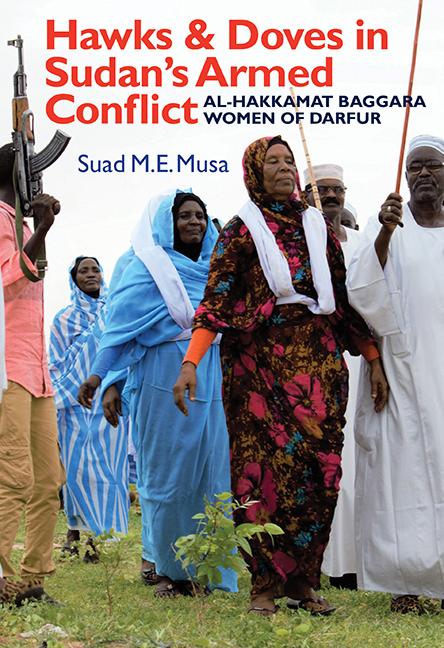Book contents
- Frontmatter
- Dedication
- Contents
- List of Illustrations
- Acknowledgements
- Glossary
- Abbreviations
- Note on Transliteration
- Introduction: Conflict in Darfur and the Role of Rural Darfuri Women
- 1 Ethnicity and Administration in Darfur
- 2 Conflict in Darfur: Causes and Implications
- 3 Al-Hakkamat Women
- 4 Local Inter-ethnic Conflicts
- 5 Government and Racial Assimilation of Ethnic Groups
- 6 Liaising with Government
- 7 New Duties and Obligations
- 8 Roles in Peace and Reconciliation
- 9 Urban Identity and Social Change
- 10 Conclusion
- Appendix: Darfur Chronology, 1445–2017
- Bibliography
- Index
- Eastern African Studies
7 - New Duties and Obligations
Published online by Cambridge University Press: 12 October 2019
- Frontmatter
- Dedication
- Contents
- List of Illustrations
- Acknowledgements
- Glossary
- Abbreviations
- Note on Transliteration
- Introduction: Conflict in Darfur and the Role of Rural Darfuri Women
- 1 Ethnicity and Administration in Darfur
- 2 Conflict in Darfur: Causes and Implications
- 3 Al-Hakkamat Women
- 4 Local Inter-ethnic Conflicts
- 5 Government and Racial Assimilation of Ethnic Groups
- 6 Liaising with Government
- 7 New Duties and Obligations
- 8 Roles in Peace and Reconciliation
- 9 Urban Identity and Social Change
- 10 Conclusion
- Appendix: Darfur Chronology, 1445–2017
- Bibliography
- Index
- Eastern African Studies
Summary
As outlined earlier, the recent history of Sudan has been plagued with wars and armed struggle. The civil wars were caused mainly by discontent with the domestic politics pursued by the riverine ruling and governing elites who have been unable to design and execute a national programme that could address the problems of the whole country. Instead, they have concentrated power, economic and political resources in the hands of a few groups that are limited socially, racially and geographically, and deprived the vast majority in the remote regions.
In efforts to win the support of the Arabs as a racial group, the government interpreted the causes and consequences of these conflicts in entirely discriminating racial terms. They dismissed insurgent movements as motivated primarily by racial hatred saying that their intention was to exterminate and/or dominate the Arabs. This interpretation was used to urge and mobilise racial and religious consciousness, which are powerful instruments in appealing to the respective people. Arab tribes and ethnic groups were presumed to take the matter in their hands and fight on behalf of the government to challenge these regional movements. Besides, their confronting one another could divert their attention from challenging the government's discriminatory domestic politics to which these regions have been treated: the politics that constituted the prime cause of such violent confrontations.
Al-Hakkamat have been part and parcel of the government mobilisation to serve these bloody confrontations and to maintain a momentum for their escalation. Thus, having been coached, goaded and co-opted into the government's domain of politics on a racial basis, al-Hakkamat, whether willingly or grudgingly, have had to undertake certain duties and obligations that included, among many others, mobilising for war in South Sudan and against the Darfur insurgency, escorting the army, providing sustenance (food rations), recruiting women and engaging with officials and public events. These matters are discussed in detail in the following sections.
MOBILISATION FOR CIVIL WAR IN SOUTH SUDAN
As already affirmed, since 1991 al-Hakkamat have been identified as a crucial element in the military strategy to defeat the insurgencies and to secure political support for the NIF regime.
- Type
- Chapter
- Information
- Hawks and Doves in Sudan's Armed ConflictAl-Hakkamat Baggara Women of Darfur, pp. 131 - 149Publisher: Boydell & BrewerPrint publication year: 2018

